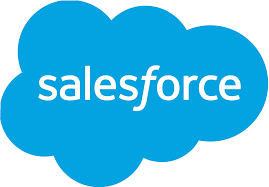After four years at Salesforce supporting customers of all sizes—from small 30-person startups to 300,000-person Fortune 100 companies—an important insight emerged: forward-looking net profit growth in an organization can often be projected using a single leading indicator: comma-separated value.
Comma-Separated Value
A company’s “comma-separated value” (CSV) can be defined as the product of its operating data incidents (DI) and the volume of data artifacts it relies on (CSVs), divided by its time-to-insight (TTI). Put simply, a business’s ability to make good, profitable decisions can be forecasted by assessing the number of incidents where data is wrong or unavailable, multiplied by the number of data artifacts it depends on, all divided by the time it takes to make decisions.
This principle was instrumental in shaping our data-focused enterprise architecture transformation in 2023, making data a core pillar alongside loan origination and servicing. Given that the company’s future growth depends on it, the focus on data was essential.
The Challenge
The challenge in technology isn’t often a lack of technical solutions but rather understanding the business problem and creating the willingness and capacity for change. At our firm, which operated heavily on Salesforce, early years were supported by Salesforce’s strong standard reporting features. However, as our data grew, Salesforce’s core reporting struggled to keep pace, with over a billion records across hundreds of objects requiring complex, multi-entity reports. To cope,we had developed a range of ad hoc data processes and thousands of CSV exports and API pulls that attempted to consolidate data.
🔔🔔 Follow us on LinkedIn 🔔🔔
When that approach proved insufficient, the team turned to CRMA (Wave, Einstein Analytics, Tableau CRM), but the volume of data incidents and performance issues only continued to grow. The Data team worked around the clock to deliver critical artifacts, yet a comprehensive modernization seemed daunting and misaligned with existing priorities. After a year of stakeholder engagement and documentation, they mapped out a clear roadmap for transformation.
The Approach
With clarity and alignment achieved, the Data & Intelligence team transitioned our data infrastructure to a modern, off-platform architecture anchored by Salesforce’s strategic partner, Snowflake. They assembled a serverless data platform that replaced the legacy setup with scalable, efficient components:
- Extraction and Loading (EL): Fivetran
- Data Warehousing: Snowflake
- Transformations (T): dbt Cloud, orchestrated via source-controlled models
- Source Control and Delivery: GitHub and GitHub Actions with Terraform
- Observability and Incident Management: Datadog, Slack, and PagerDuty
At the core of this architecture is Snowflake, strategically aligned with Salesforce for seamless data integration. The choice of Fivetran allowed for optimized Salesforce formula reconciliation through dbt Core, essential for Reach’s complex data needs. Currently, over a billion Salesforce core records are now resident in Snowflake, with transformations running on dbt Cloud to align with our medallion architecture (Bronze, Silver, and Gold data schemas). This setup minimizes data incidents and enables the company to distribute data artifacts across the organization in preferred formats, including CSV and direct Tableau access.
The Salesforce Data Cloud Question
Given the architecture, there were two main questions:
- Cost Comparison to CRMA: Despite being comprehensive, Salesforce Data Cloud’s licensing costs exceeded the combined costs of Fivetran, dbt Cloud, and Snowflake.
- Reliance on Salesforce Data Cloud: Reach’s team piloted Salesforce Data Cloud, but the platform’s limitations with formula fields and inflexibility in cost control didn’t align with Reach’s needs.
While the team acknowledges that future Salesforce developments will increasingly necessitate Data Cloud adoption—especially with the upcoming Agentforce AI-driven capabilities built on Data Cloud—the architecture’s integration with Snowflake and compatibility with Salesforce makes for a seamless pairing if needed.













